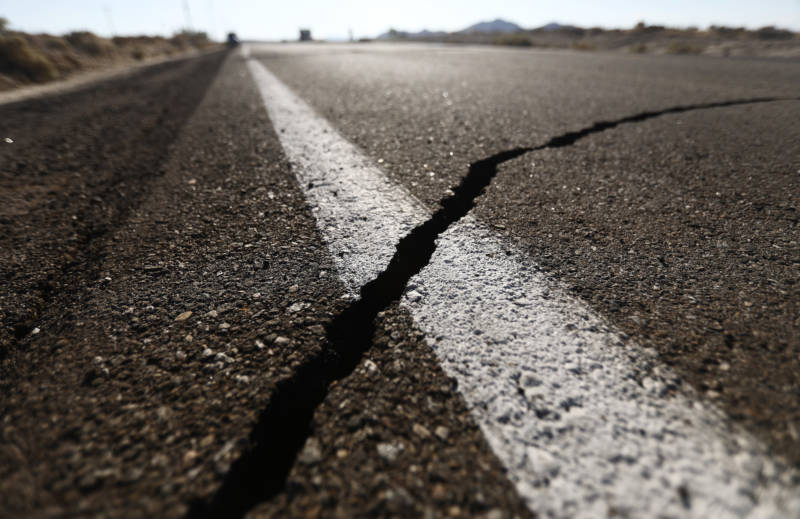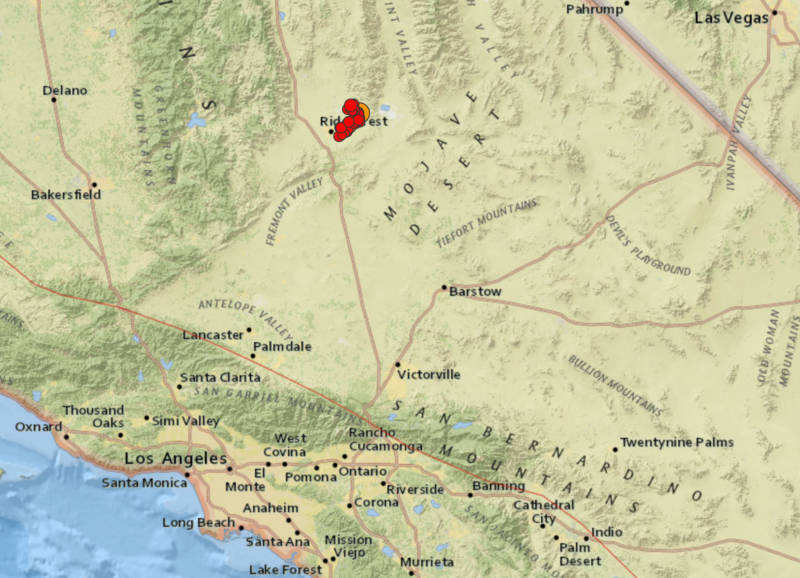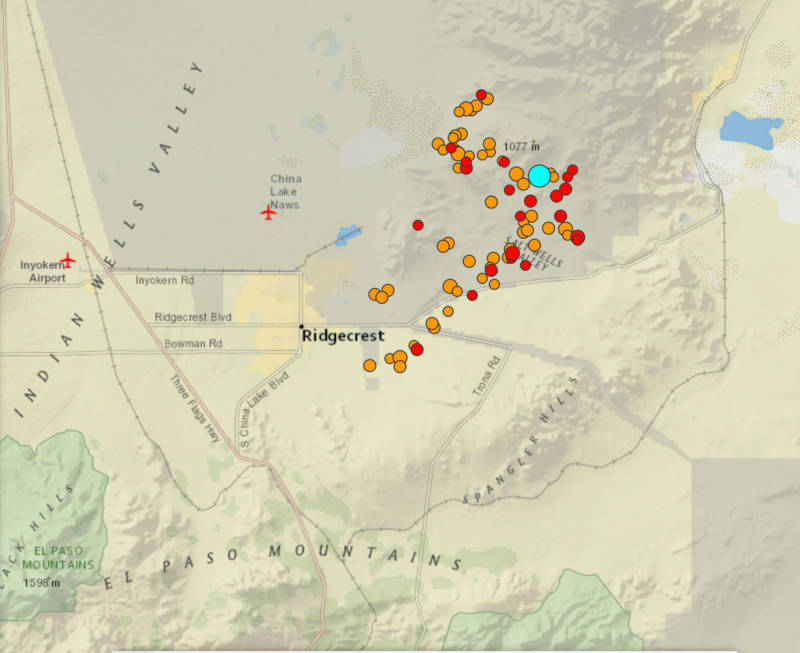Updated 11:18 a.m., Saturday, July 6:
Just 32 hours after a 6.4 magnitude earthquake shook the town of Ridgecrest and a wide area across Southern California, a second, stronger quake struck the region.
The U.S. Geological Survey said the magnitude 7.1 quake struck at 8:19 p.m. about 10 miles outside Ridgecrest, a town of 29,000 that was shaken by a 6.4 earthquake on Thursday morning. The epicenter is about 125 miles northeast of Los Angeles.
Seismologists at Caltech in Pasadena estimated Friday night's quake was 10 times more powerful than the Fourth of July event, now considered a foreshock.
They said the fault causing the earthquakes appears to be growing, now likely to be 25 to 30 miles long, according to Los Angeles Times. More quakes are expected.
Gov. Gavin Newsom declared a state of emergency for Kern County and San Bernardino County to expedite state assistance for the quake zone.
Newsom also requested a Presidential Emergency Declaration for official federal assistance. The Federal Emergency Management Agency has been providing resources to local agencies.
As of Saturday morning, no fatalities or major injuries have been reported, according to a press conference held by the Governor's Office of Emergency Services (OES). Officials also announced that local commodity distribution stores reopened to the public, the power was set back on for most of the affected areas and all repairs to damaged roads have been made.
Aftershocks occurring over a 50 kilometers wide area continued Saturday morning.



